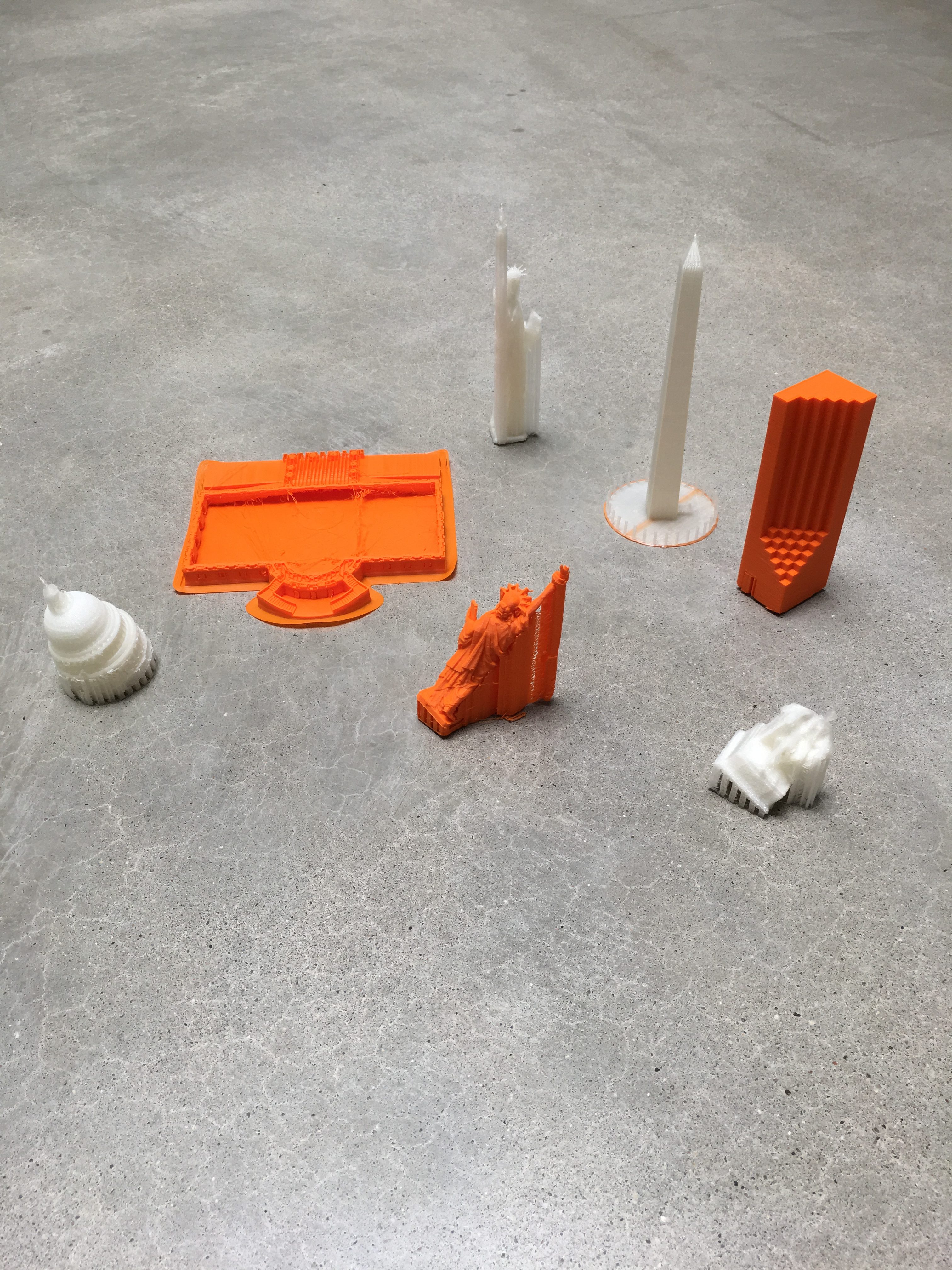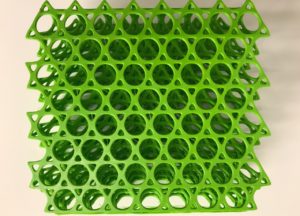Drawing Structures

Matthew Kluber (Art and Art History, Grinnell) and Laurel Farrin (Art and Art History, Iowa) have collaborated beginning in summer 2018 on a Digital Bridges project called “Drawing Structures.” This collaboration focuses on applications of 3D printing technology to print objects to be incorporated into art installations. Kluber and Farrin also explore using other materials (concrete, glass) in these printers and ways to “scale up” smaller objects into large art pieces.
This project enabled the collaborators to focus on new approaches to “drawing” practice, while exchanging ideas about and experiences with 3D printing technology. Kluber’s work involves generating 3D files and printing geometric forms of various sizes and color. He approaches these forms as (dimensional) extensions of ideas which have appeared in his painting and 2D digital work for nearly twenty years. The possibilities for 3D printing could involve a number of options such as seeking opportunities to print objects on a larger scale, acquiring similar 3-D printers to continue working, and producing enough work to present in an exhibition.
 Kluber and Farrin work with the UI School of Art and Art History’s Ultimaker 2, a 3D printer in the dimensional practice area with the help of graduate student Joe Lacina, hired for consultation. Preconceived ideas of what the 3D printer could print quickly gave way to experimentation and surprise. Farrin downloaded open-sourced 3D files from thingverse.com and became interested in the “scaffolding” used to print figures. This scaffolding is usually trimmed away to reveal the object, but the scaffolding offers a vision of abstraction of these forms and their connection with the figure. “Messing up” the orientation of the figure in relation to the scaffolding of the file (Farrin chose files of monuments: The Statue of Liberty, the Lincoln Memorial, the Washington Memorial, The White House) changes the conceptual resonance of the monuments, transforming plastic souvenirs someone might buy at a cheap tourist kiosk into a political critique. The scaffolding that supports the building of these objects in a 3D printer alludes to so much, from the labor of invisible workers–slaves and immigrants who built this country–to the invisible laws of nature that support and generate life.
Kluber and Farrin work with the UI School of Art and Art History’s Ultimaker 2, a 3D printer in the dimensional practice area with the help of graduate student Joe Lacina, hired for consultation. Preconceived ideas of what the 3D printer could print quickly gave way to experimentation and surprise. Farrin downloaded open-sourced 3D files from thingverse.com and became interested in the “scaffolding” used to print figures. This scaffolding is usually trimmed away to reveal the object, but the scaffolding offers a vision of abstraction of these forms and their connection with the figure. “Messing up” the orientation of the figure in relation to the scaffolding of the file (Farrin chose files of monuments: The Statue of Liberty, the Lincoln Memorial, the Washington Memorial, The White House) changes the conceptual resonance of the monuments, transforming plastic souvenirs someone might buy at a cheap tourist kiosk into a political critique. The scaffolding that supports the building of these objects in a 3D printer alludes to so much, from the labor of invisible workers–slaves and immigrants who built this country–to the invisible laws of nature that support and generate life.
Matthew Kluber was a participant in and presenter at the 2016 Digital Bridges Summer Institute. He was also the Digital Bridges Obermann Fellow for 2016-2017. His collaboration with Laurel Farrin was supported by a Digital Bridges award for a 2017 summer collaborative partnership between Kluber and Farrin with contributions by Joe Lacina.
